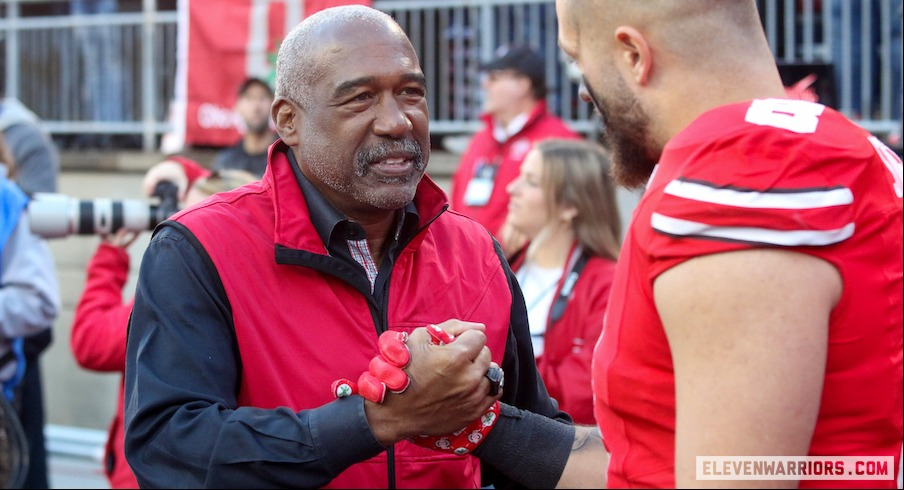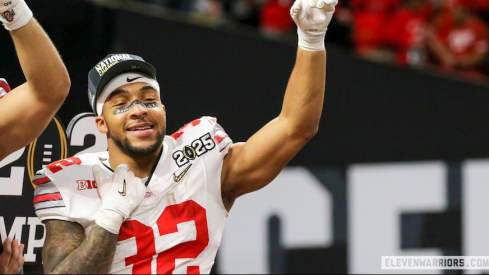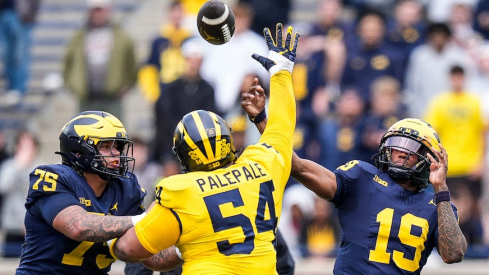It’s becoming increasingly likely that college athletes will soon receive a direct cut of the revenue from their schools.
According to multiple reports in recent weeks, the NCAA has discussed a settlement with the plaintiffs in House v. NCAA, an antitrust case that seeks to eliminate the NCAA’s restrictions on athlete compensation, that would include a commitment from conferences and schools to share revenue with athletes.
Yahoo Sports’ Ross Dellenger reported this week that the new model would allow teams to share revenue up to a cap equivalent to 22% of the average of power conference revenue streams, a figure that would start between $17-22 million annually per school. CBS Sports’ Dennis Dodd reported that the Big Ten and SEC, which formed a joint advisory group in February, are leading the way in developing the revenue-sharing plan.
Sources have told Eleven Warriors that colleges are preparing to start sharing revenue with athletes in the 2025-26 academic year.
During an interview on WOSU’s All Sides with Anna Staver on Thursday, retiring Ohio State athletic director Gene Smith said the settlement to come sooner than later, which would put a plan for sharing revenue with athletes in motion.
“It’s coming,” Smith said. “I think that case (House v. NCAA) is going to get settled in the near future, and we will revenue share.”
While the expectation is that the NCAA’s ban on athletes being paid directly for competing in college sports will be eliminated with the impending legal settlement, Smith says he does not believe the new model will lead to college athletes becoming employees – at least not yet.
“I don’t think it’s gonna be like employees in the near future. I think that’s always gonna be on the table because of lawsuits and things of that nature, and I hope it doesn’t get there,” Smith said.
Smith said it’s still being determined exactly how and how much revenue will be shared with athletes. That said, Ohio State would stand to benefit from a system in which all schools are subject to the same revenue-sharing cap, given that OSU made the most revenue of any collegiate athletic department ($279,549,337) during the 2023 fiscal year.
“Right now, the (House) plaintiffs, their position is that student-athletes should receive 50% of the ticket sales, sponsorship and media rights … That changes things big time,” Smith said. “We’re fortunate they all looking at all schools, so having certain schools in that calculation – if it was just Ohio State, it’d be more money, but when you look at the aggregate, there’s an average. And I think it’s gonna be settled, and we’re gonna be looking at some new model for how student-athletes are compensated.”
Name, image and likeness benefits will continue to be a part of college sports even when colleges begin sharing revenues with athletes. The influence of donor-led collectives will decrease, however, if schools are allowed to make NIL deals directly with their athletes. A rule change already passed by the NCAA in April will allow schools to facilitate NIL deals between athletes and third parties beginning in August.
The collective-driven model was not what Smith envisioned when he was part of a working group that recommended NIL guidelines to the NCAA before athletes were first permitted to profit from their name, image and likeness in July 2021. But he believes the new model will help rectify the issues with the current model.
“I don’t think (NIL) was implemented well. It could have been implemented better from an NCAA perspective. But I think it’s going to work itself out,” Smith said. “I think there could have been some guardrails put in place that were not approved early on around how student-athletes actually do deals and making sure that the original intent of NIL could be met as opposed to it being pay-for-play, which is actually what it emerged to. … But I think it’s getting ready to shift at some point where schools will be more involved in the NIL space. And so that’ll help bring some more clarity and guidelines to it.”
Smith won’t be Ohio State’s athletic director anymore whenever a revenue-sharing model does go into effect, as he will retire at the end of June. His advice to new athletic director Ross Bjork and everyone else in college sports, though, is to embrace the changes coming to college athletics and figure out how to make them work rather than fight against them.
“I think the biggest thing that people need to appreciate about it is the intercollegiate athletic model is going to change. And I’ve always told my teammates, you have to embrace change or be irrelevant,” Smith said. “And so figure out how you’re gonna embrace it. And then be a part of that change.”


